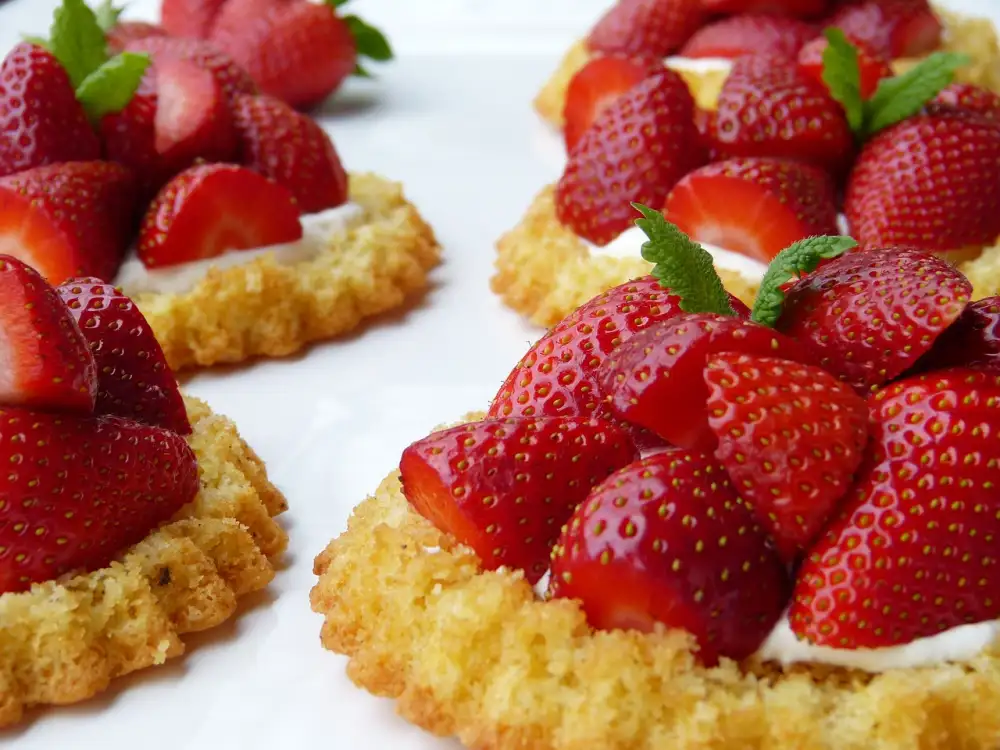Discover the Delight of Gluten-Free Flour: A Healthy Alternative for Your Culinary Creations

In recent years, there has been a growing interest in gluten-free diets due to the increasing number of people with gluten sensitivities and celiac disease. This has led to the rise in popularity of gluten-free flour as a healthy alternative for culinary creations. Whether you have dietary restrictions or simply want to explore new flavors, gluten-free flour can be a game-changer in your kitchen. In this article, we will delve into the world of gluten-free flour, its benefits, and how it can enhance your cooking experience. Get ready to discover the delight of gluten-free flour and unlock a whole new realm of culinary possibilities.
Understanding Gluten and its Effects on Health
Gluten is a protein found in grains such as wheat, barley, and rye. For individuals with celiac disease or gluten sensitivity, consuming gluten can lead to a range of health issues. These include digestive problems, nutrient deficiencies, fatigue, and even damage to the small intestine.
Celiac disease is an autoimmune disorder where the body's immune system mistakenly attacks the small intestine when gluten is consumed. This can result in malabsorption of nutrients and long-term health complications if left untreated.
Even for those without celiac disease or gluten sensitivity, gluten can still have negative effects on health. It has been linked to inflammation in the body, which can contribute to various chronic conditions like arthritis, heart disease, and even mental health disorders.
Understanding the potential harm that gluten can cause highlights the importance of finding alternatives for those who need or choose to avoid it. Gluten-free flour provides a healthy alternative that allows individuals to enjoy their favorite dishes without compromising their well-being.
What is Gluten Free Flour?
Gluten free flour is a type of flour that does not contain gluten, a protein found in wheat, barley, and rye. It is specifically designed for individuals who have gluten intolerance or celiac disease. Gluten free flours are made from alternative grains such as rice, corn, quinoa, and sorghum. These flours provide a safe and healthy option for those with dietary restrictions or seeking to reduce their gluten intake. They can be used as a substitute for regular flour in various recipes without compromising taste or texture.
Benefits of Using Gluten Free Flour
Using gluten-free flour has numerous benefits for your health and culinary creations. Firstly, it is a great option for those with gluten sensitivities or celiac disease, as it allows them to enjoy baked goods without the negative effects of gluten. Secondly, gluten-free flour is often higher in fiber and nutrients compared to traditional wheat flour, making it a healthier choice overall. Additionally, using gluten-free flour can lead to lighter and fluffier baked goods, as it does not contain the proteins that can make dough dense and heavy. Lastly, incorporating gluten-free flour into your diet can help diversify your food options and introduce you to new flavors and textures.
Types of Gluten Free Flours Available
When it comes to gluten-free flours, there are a variety of options available to cater to different dietary needs and culinary preferences. Some popular types include almond flour, coconut flour, rice flour, oat flour, and chickpea flour. Each of these flours has its own unique taste and texture, making them suitable for various recipes. Almond flour is nutty and adds moisture to baked goods, while coconut flour is light and airy. Rice flour is versatile and can be used in both sweet and savory dishes. Oat flour provides a hearty flavor, while chickpea flour adds a subtle nuttiness. Experimenting with these different gluten-free flours will open up a world of possibilities in your culinary creations!
Tips for Baking with Gluten Free Flour
When baking with gluten-free flour, it's important to keep a few tips in mind. Firstly, it's crucial to follow the recipe closely and measure ingredients accurately. Gluten-free flours can be more sensitive to changes in measurements, so precision is key.
Additionally, it's recommended to use a blend of gluten-free flours rather than relying on just one type. This helps achieve a better texture and flavor in your baked goods. Experiment with different combinations to find the blend that works best for you.
To improve the structure of your baked goods, consider adding binding agents such as xanthan gum or guar gum. These help mimic the elasticity that gluten provides and prevent your creations from becoming crumbly.
Another tip is to add extra moisture to your recipes. Gluten-free flours tend to absorb more liquid than traditional flours, so adding an extra tablespoon or two of liquid can help prevent dryness.
Lastly, don't be discouraged if your first attempts with gluten-free flour don't turn out perfectly. It may take some trial and error to get the hang of baking without gluten. With practice and patience, you'll soon be able to create delicious treats that are both gluten-free and satisfyingly scrumptious!
Incorporating Gluten Free Flour into a Healthy Diet
Adding gluten free flour to your diet can be a great way to promote a healthier lifestyle. By replacing traditional wheat flour with gluten free alternatives, you can reduce your intake of gluten and potentially experience improved digestion and overall well-being.
One simple way to incorporate gluten free flour into your diet is by using it as a substitute in your favorite recipes. Whether you're baking bread, making pancakes, or creating delicious desserts, there are plenty of gluten free flour options available that will allow you to enjoy the same flavors and textures without the negative effects of gluten.
Another way to incorporate gluten free flour into your diet is by exploring new recipes that specifically call for these alternative flours. From gluten free pizza crusts to homemade pasta, there are countless possibilities to explore and experiment with. You may be surprised at how versatile and delicious these flours can be!
When incorporating gluten free flour into your diet, it's important to remember that each type of flour has its own unique properties. Some flours may require additional moisture or binding agents, so be sure to follow recipes carefully and make any necessary adjustments.
By embracing the health benefits of gluten free flour and incorporating it into your daily meals, you can enjoy a wide range of culinary creations while promoting better digestion and overall wellness. So why not give it a try? Your taste buds and body will thank you!
Gluten Free Flour Recipes for a Healthier Lifestyle
Embracing gluten-free flour opens up a world of possibilities for creating delicious and nutritious dishes. Here are some recipes to inspire you on your journey towards a healthier lifestyle:
1. Gluten-Free Banana Bread: Swap regular flour with gluten-free flour for a moist and flavorful treat. Add walnuts or chocolate chips for an extra indulgence.
2. Quinoa Salad: Cook quinoa and mix it with colorful vegetables, herbs, and a tangy dressing. This protein-packed salad is perfect for a light lunch or dinner.
3. Gluten-Free Pancakes: Start your day off right with fluffy pancakes made from gluten-free flour. Top them with fresh berries and maple syrup for a delightful breakfast.
4. Zucchini Noodles: Use a spiralizer to create zucchini noodles and toss them in a homemade tomato sauce. This low-carb alternative to pasta is both healthy and satisfying.
5. Chickpea Flatbread: Combine gluten-free flour with chickpea flour to make a versatile flatbread that can be used as a pizza crust or as wraps for sandwiches.
These recipes showcase the versatility of gluten-free flour and prove that healthy eating doesn't have to be bland or boring. Experiment with different flavors and ingredients to create your own culinary masterpieces while enjoying the health benefits of gluten-free cooking.
In conclusion, embracing the health benefits of gluten-free flour can be a game-changer for your culinary creations. Not only does it provide a safe alternative for those with gluten sensitivities or celiac disease, but it also offers numerous advantages for everyone's overall well-being. By using gluten-free flour, you can enjoy delicious dishes without compromising on taste or texture. So why not give it a try and explore the world of gluten-free baking? Your body and taste buds will thank you!
Published: 09. 01. 2024
Category: Health



